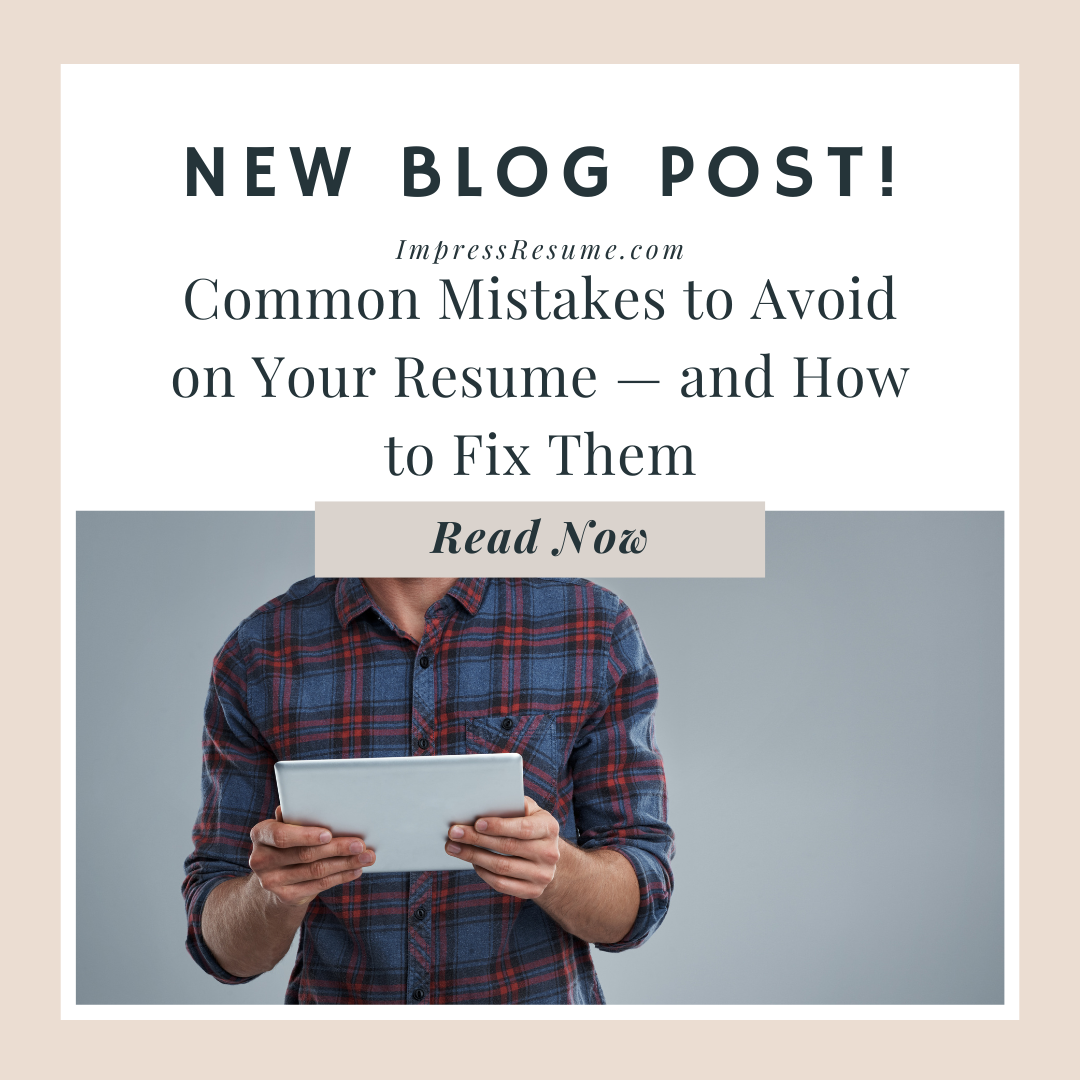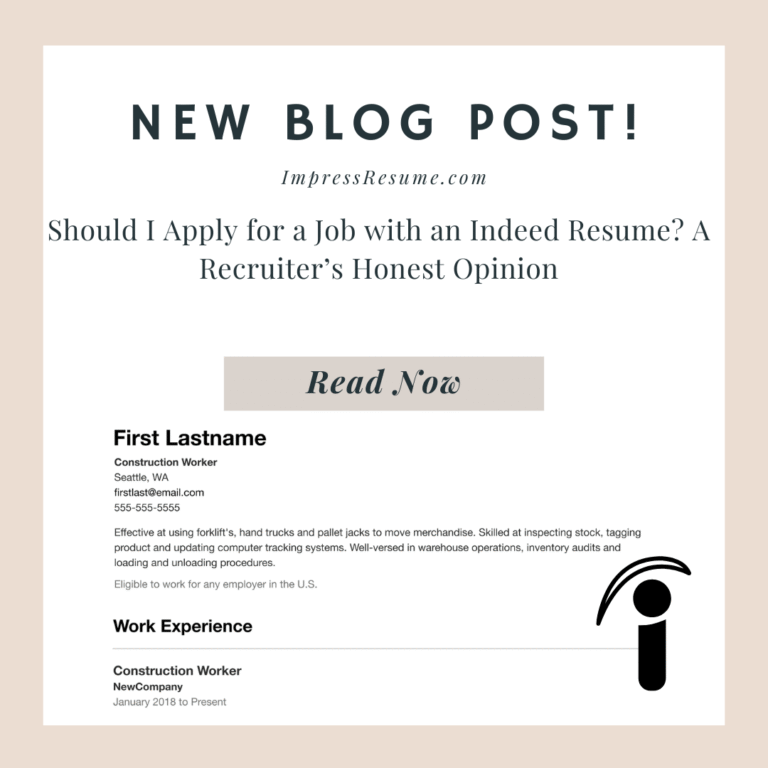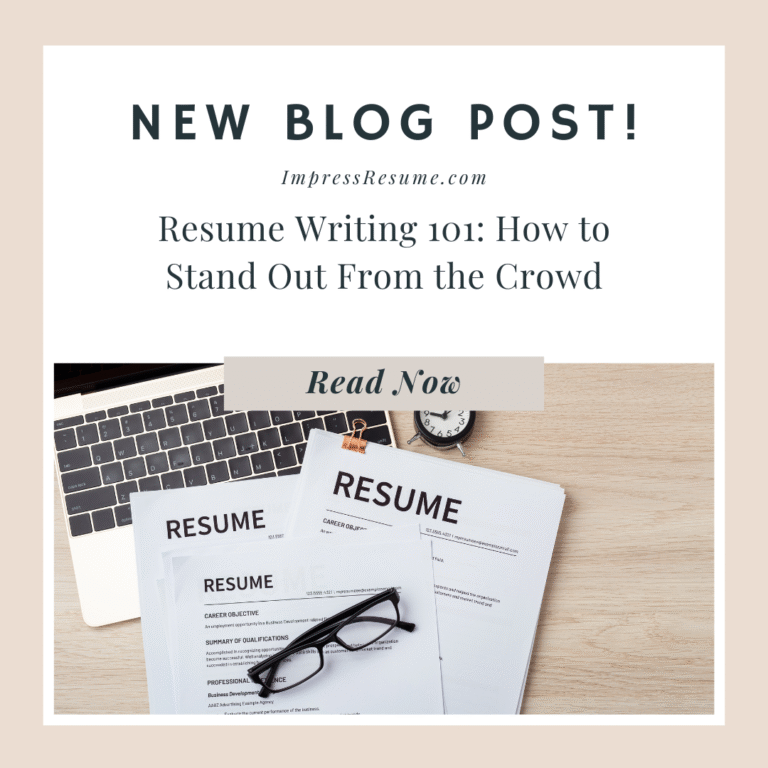20 Common Mistakes to Avoid on Your Resume (And How to Fix Them)
Your resume is your first shot at making a strong impression—and a single mistake can be enough to land your application in the rejection pile. As a staffing recruiter, I’ve reviewed thousands of resumes and spotted the same issues over and over again.
The good news? Most of these mistakes are easy to fix once you know what to look for.
Here are 20 of the most common resume mistakes, why they matter, and how to fix them—so you can present your best self to hiring managers and Applicant Tracking Systems (ATS).
1. Using a Non-ATS-Friendly Format
Why it hurts you: ATS software can’t read columns, tables, images, or unusual fonts.
Fix it: Use a clean, simple layout that avoids graphics and complex formatting.
✅ Need help? ImpressResume.com/shop has recruiter-designed ATS-friendly templates.
2. Starting with a Weak or Generic Summary
Why it hurts you: You miss a chance to highlight your value in the first few lines.
Fix it: Craft a strong summary that showcases your experience, skills, and what sets you apart.
3. Listing Job Duties Instead of Accomplishments
Why it hurts you: Recruiters want to see impact, not just what your responsibilities were.
Fix it: Use action verbs and highlight results (e.g., “Increased sales by 30%”).
4. Including Irrelevant Work Experience
Why it hurts you: It distracts from the roles that matter.
Fix it: Tailor your resume to the job you’re applying for. Only include relevant roles.
5. Using the Same Resume for Every Job Application
Why it hurts you: Employers can tell when you’re not tailoring your resume.
Fix it: Customize your resume for each job by tweaking the summary, keywords, and highlights.
6. Spelling and Grammar Mistakes
Why it hurts you: It looks careless and unprofessional.
Fix it: Use spell check and proofread. Read it aloud or ask someone else to review it.
7. Not Using Keywords from the Job Description
Why it hurts you: ATS may not rank your resume as a match.
Fix it: Mirror key terms and skills listed in the job description throughout your resume.
8. Using Passive Language
Why it hurts you: It sounds dull and unengaging.
Fix it: Start bullet points with strong action verbs like “Led,” “Created,” or “Managed.”
9. Including a Photo
Why it hurts you: Most ATS systems can’t read image files, and in many countries, it’s discouraged.
Fix it: Leave the photo off and use that space for more relevant information.
10. Listing “References Available Upon Request”
Why it hurts you: It’s outdated and unnecessary.
Fix it: Save the space—only provide references when asked.
11. Overcrowding with Too Much Text
Why it hurts you: It’s hard to read and skim quickly.
Fix it: Use bullet points, proper spacing, and concise phrasing.
12. Using an Unprofessional Email Address
Why it hurts you: It raises a red flag.
Fix it: Create a simple, professional email like firstname.lastname@gmail.com.
13. Leaving Out Dates of Employment
Why it hurts you: It looks like you’re hiding gaps.
Fix it: Be honest—use month and year format for clarity.
14. Putting Important Info in the Header or Footer
Why it hurts you: ATS may skip headers and footers.
Fix it: Keep key content (name, contact info, skills) in the body of the document.
15. Using First Person Pronouns (I, Me, My)
Why it hurts you: It’s not standard resume language.
Fix it: Use a professional tone without personal pronouns.
16. Listing Too Many Soft Skills Without Examples
Why it hurts you: It sounds generic.
Fix it: Back up soft skills like “team player” or “strong communicator” with real examples.
17. Leaving Large Employment Gaps Unexplained
Why it hurts you: It can raise concerns for employers.
Fix it: Address gaps briefly in your cover letter or include explanations like “Freelance Work” or “Career Break.”
18. Ignoring Formatting Consistency
Why it hurts you: Inconsistent fonts, spacing, or alignment look unprofessional.
Fix it: Use consistent styling across all sections. Clean formatting helps readability and ATS scoring.
19. Including Too Many Buzzwords Without Substance
Why it hurts you: Words like “go-getter” and “synergy” don’t tell a recruiter much.
Fix it: Focus on concrete achievements, not fluffy jargon.
20. Making It Too Long or Too Short
Why it hurts you: A resume that’s too long feels bloated, too short may feel underdeveloped.
Fix it: Stick to one page for early-career professionals, two for experienced candidates.
Final Thoughts from a Staffing Recruiter
The smallest changes can make a big difference when it comes to resume success. A clean, keyword-rich, and action-driven resume doesn’t just look good—it performs well in ATS and grabs the attention of busy recruiters.
If you’re not sure where to start or you’re tired of second-guessing your formatting, ImpressResume.com/shop is here to help. Our resume bundles are affordable, ATS-tested, and created by a recruiter who’s been on the other side of the hiring process.
You’ve got what it takes—now let your resume prove it.







